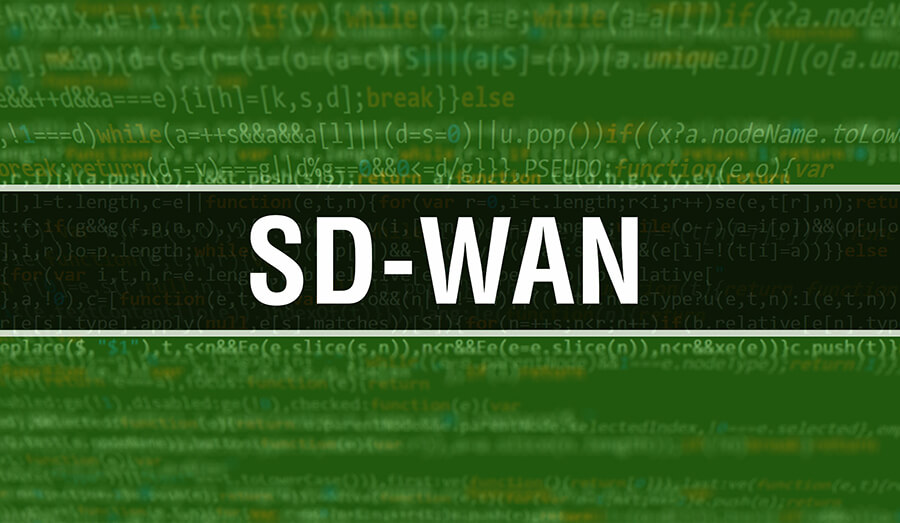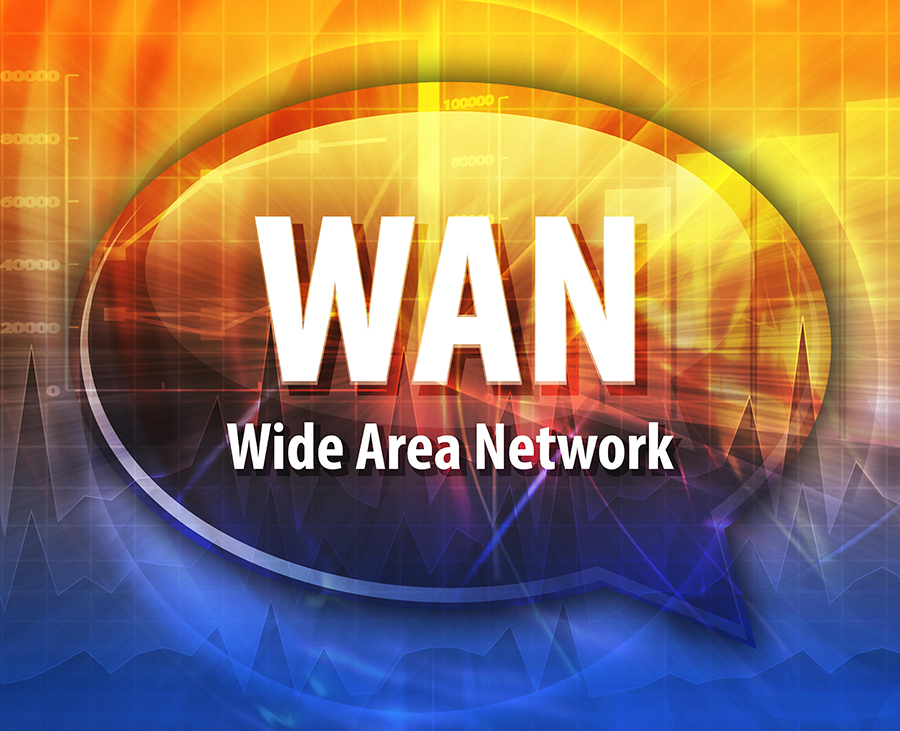Articles
Sample Articles from Bob Wallace.
Read More about Bob.
Top Questions for Wireless Operators Worldwide on Network Sunsettings
- Details
- Published on 30 October 2023

(Credit: Gordon Scammell / Alamy Stock Photo)
Plan to expand? Prepare for country-specific plans to sunset 2G and 3G nets for 5G to rise.
IT leaders need to evaluate the benefits and the challenges of wireless networking outside the U.S. before deciding whether to do business in foreign countries.
For now, and for years, they need to avoid getting stuck in the sunsetting of 2G and 3G networks in favor of newer 5G network service. That typically means forced software or hardware device upgrades.
While many countries have sunset the older networks to drive 5G, many countries, including most of Africa and chunks of Asia, are sticking with 2G and 3G for the foreseeable future. This results in technical and business barriers for expansion-minded U.S. enterprises.
Thinking of International Expansion? Not so fast.
Torecap, wireless operators in the U.S. and abroad have recently shut down their 2G and 3G networks to use the precious radio frequency spectrum to support the creation of more advanced and feature-rich 5G networks.
However, there is no single mandate or timeline for other countries to make the switch. In fact, countries with two or more wireless operators, including the U.S. and Canada, do not have a single common date for shutdowns.
This creates a global puzzle of wireless offerings for businesses to piece together. Doing business in countries not on the same page can result in slower speeds, higher costs, communications complexities, and security challenges.
Questions to ask operators when planning a business expansion
When considering expanding a U.S. business into foreign countries, IT planners need to research the following crucial items.
- What is the country's timeline for sunsetting older wireless networks in favor of 4G and 5G networks and services? They vary, and many countries do not have one.
- Will reported 5G benefits over older wireless nets – lower energy costs and less carbon use – be passed along by operators to new businesses in a desired country?
- What wireless service(s) will the countries’ carriers provide for IoT devices, most of which have relied on 2G and 3G networks in the past (and in the U.S.)? Will 2G service continue for IoT and other dependent devices after 5G takes hold?
- What version/release of 5G do/will you support? For example, a recent version supports a capability called NR Reduced Capacity (RedCap), which extends advanced 5G features to previously low-speed IoT devices and more.
- What phones, remote devices, and vendor CPE does/will the 5G network support?
- Is/will Voice over LTE (VoLTE) be supported over 4G networks for phone calls once 2G and 3G networks are turned off? VoLTE was created for 4G and will also work with 5G New Radio (NR) networks. Voice calls over 3G are less reliable and of lower quality.
- Will you/when will you deploy 5G standalone (SA)? 5G standalone is a type of 5G network that operators build specifically from start to finish for 5G, meaning it combines a 5G radio access network (RAN) with a 5G core. Networks running standalone 5G could deliver faster speeds with lower latency for tasks such as monitoring the health of government vehicles and tracking edge devices. Networks running 5G are bringing faster speeds to smart cities, healthcare, and finance.
- Will you employ network slicing in your 5G network? Network slicing is an emerging feature that enables network operators to slice up cellular bandwidth to create customized, logical, and virtualized networks over a multi-domain infrastructure. These slices can create the potential for advanced and specialized services that offer differentiation across a 5G network.
- Since 3G sunsetting is typically not a flash cut, can you provide a map and timeline that shows which areas will lose service first, starting when, and for how long?
- Do operators have sufficient funds for the rollout of 5G, or will they be looking to heavy network users like big tech and social media firms to subsidize the efforts? A request earlier this year by many European telcos spawned debate over whether some of the largest network users should contribute to funding 5G networks.
- Will wireless operators offer satellite-to-cellular connectivity to consumers? When? And will it be free or a pay extra add-on? This emerging capability will enable users with newer cell phones to reach their destination via low Earth orbit (LEO) satellites.
A final word on network sunsettings
Finding information, guidance, and advice for enterprises seeking to expand their domestic networks internationally or networks to additional foreign countries is hardly light lifting. However, tech companies in foreign countries can typically provide valuable dos and don’ts to make the wireless sunsetting and 5G deployment puzzle far less intimidating than a Rubik’s Cube.
Related articles:
SD-WAN vs MPLS: What's The Difference & Which Is Better?
- Details
- Published on 30 October 2023

(Credit: Borka Kiss / Alamy Stock Photo)
While SD-WAN offers many advantages over MPLS, the choice between them should be based on the specific needs and context of the enterprise. Here are some points to consider when making the choice.
When designing a network to connect central and far-flung offices, IT leaders are presented with two core choices. One is a Software-Defined Wide-Area Network (SD-WAN) overlay, and the other is Multiprotocol Label Switching (MPLS) technology with routers.
To understand which option better meets your network needs today and tomorrow, it's crucial you understand the key difference between the solutions. SD-WANs are service-provider agnostic. In contrast, MPLS requires enterprises to use the same service provider at all locations.
Read more: SD-WAN vs MPLS: What's The Difference & Which Is Better?
Internet Use by Farms Edges Forward, But Precision Agriculture is Lagging
- Details
- Published on 12 October 2023

(Credit: Panther Media GmbH / Alamy Stock Photo)
Internet Use by Farms Edges Forward, But Precision Agriculture is Lagging
Half of U.S. farms appear positioned with the technology needed to improve the way they do business. But the other half doesn’t. That’s according to a report by the United States Department of Agriculture (USDA) National Agricultural Statistics Service.
At issue is the advancement of farming – referred to as precision agriculture. It’s a long-standing strategy to employ advanced tech to react to changing inputs such as temperature and precipitation that factor into farm management. It requires the connection of machines, people, and technology.
Where are we with Precision Agriculture?
One-quarter of farms nationwide use precision agriculture, the researchers found. The report was based on a survey of 14,000 agricultural operations. USDA estimates that there are almost 2 million farms in the U.S.
To date, the tools for practitioners have been cellular and satellite-based, including Global Positioning System (GPS) and Global Navigation Satellite System (GNSS) services. The precision agriculture approach allows farmers to make important resource management decisions both on-site and in real time.
With greater bandwidth and broadband access (wireless), the list of precision agriculture toolbox will expand to include GPS yield monitoring and soil mapping, variable rate input applications, use of drones for scouting fields or monitoring livestock, electronic tagging, precision feeding, robotic milking, etc., the report said.
Precision Agriculture Practices, Leaders, and Followers.
Beginning in 2021, data were collected for precision agriculture practices with the question: "In the last 12 months, did this farm or ranch use precision agriculture practices to manage crops or livestock?
More recently, four Midwestern states exceeded 50% percentage of farms using precision agriculture mark. They are North Dakota (57%), Nebraska (55%), South Dakota (53%) and Illinois (51%). Bringing up the rear is West Virginia, where only 8% of farms reported using precision agriculture.
Broadband Access is an Enabler
This year, 51% of surveyed farm operators claimed they had broadband access to the Internet. Perhaps more concerning is that only 25% of them are using it to practice precision agriculture.
"What we have been seeing is a continued steady increase in rural Internet access," said Tony Dorn, Chief, Environmental, Economics, and Demographics Branch of the FDA, of tech use among surveyed farmers from 2021 to 2023. The report noted that 2% of the farms surveyed still use dial-up internet connections.
Help is on the Way
In late August, the USDA announced nearly $700 million in grants and loans to connect thousands of rural residents, farmers, and business owners in 22 states to reliable, affordable, high-speed Internet through the ReConnect Program, funded by President Biden’s Bipartisan Infrastructure Law. This program is uniquely designed to fund the most difficult high-speed internet projects in the nation, which are the most rural, remote, and unserved communities.
The latest funding round includes $667 million in USDA investments in Alaska, Arkansas, Arizona, California, Illinois, Iowa, Kansas, Michigan, Minnesota, Mississippi, Missouri, Nevada, New Mexico, North Carolina, Ohio, Oklahoma, Oregon, South Carolina, Texas, Virginia, Washington, and Wisconsin.
What Constitutes a Farm?
According to the USDA survey, a farm is "any place from which $1,000 or more of agricultural products were produced and sold, or normally would have been sold, during the year." There was no revenue ceiling for large farm operations.
Farm Technology Use and Ownership Highlights
Nationally, 85 percent of farms reported having access to the Internet. In 2023, 32 percent of farms used the Internet to purchase agricultural inputs, which was an increase of 3 percent from 2021.
Agricultural inputs are defined as resources that are used in farm production, such as seeds, fertilizers, pesticides, veterinary drugs, equipment, animal feed, energy, and machinery.
Additionally, 23 percent of farms used the Internet to market agricultural activities, which was an increase of 2 percent from 2021. Farms, which conducted business with non-agricultural websites in 2023, increased by 2 percent to 49 percent.
In 2023, 51 percent of Internet-connected farms utilized broadband connections, while 75 percent of Internet-connected farms had access through a cellular data plan. Additionally, 69 percent of farms had a desktop or laptop computer, while 82 percent of farms had a smartphone.
The Final Word on Farm Technology Use and Precision Agriculture
For the application of technology to move the needle for the future of farming, it appears these operations need to transition from today’s practice of data transmission over low-speed links to massive data movement and analysis enabled by high-speed services such as 5G.
Once all parties in the farming industry ecosystem view farms as data centers as opposed to fields of crops, owners will be in a position to manage their assets using precision agriculture.
Related articles:
How SASE Can Help Enterprises with Network Expansion and Protection
- Details
- Published on 21 September 2023

(Credit: Zoonar GmbH / Alamy Stock Photo)
SASE offers streamlined provisioning and enhanced security when adding remote offices, WFH sites, and mobile workers to enterprise networks.
Stated simply, secure access service edge, also known as SASE, is a cloud architecture that combines network and cloud-native security technologies and delivers them as a single cloud service.
As a result, SASE enables enterprises to use a single management console to bring together their network and security tools. This recasts network expansion by providing a simple security and networking tool that's independent of where employees and resources are located.
With the number of remote workers increasing and more organizations using cloud services to run applications, SASE offers a fast, affordable, and scalable SaaS product that covers both networking and security functions.
Network Expansion to Date and Going Forward
“Irrespective of SASE, there’s been a general trend to make network deployments easier over the past decade,” explained Mauricio Sanchez, Senior. Director, Enterprise Security & Networking Research at Dell’Oro Group, a network infrastructure market research and analysis firm. "The classic case is dropping shipping a box somewhere (a router, a Wi-Fi AP, etc.) and having it automatically provision its network policy by itself once it gets plugged in."
Fast forward to what’s happening with SASE, that ease-of-deployment and auto-provisioning is extending to the security and endpoint side. “On the security side, the user/SASE security policy is now starting to be attached to the network provisioning workflows, which gets us one step closer to secure networks out of the box,” said Sanchez.
"On the endpoint side, it's a conversation about how to get endpoints (laptops, iPads, phones) secure connectivity." As a result, SASE solutions are now extending to help provision that secure connectivity a lot faster and better than before.
What SASE Solutions Include
SASE requires little to no hardware and uses cloud technology to bring together (SD-WAN) with network security functions. They include Firewall-as-a-Service (FWaaS), Software-as-a-Service (SaaS), Secure web gateways, Cloud access security brokers, and Zero Trust Network Access.
Beyond Provisioning to Zero Trust Network Access (ZTNA)
Enterprises beset with adding a growing number of remotes and WFH locations still need to face ZTNA. Any SASE solution worth its beans is going to be able to show how it helps improve zero-trust in the organization. “When lighting those new remote sites or users, it’s vital to leverage zero trust philosophy and make sure those remote sites/users only get the access they need and no more,” explained Sanchez. Otherwise, he added, it’s as good as leaving the back door open.
Why the growth in enterprise networks?
SASE has taken center stage in network planning as enterprises face a two-headed challenge or provide secure access to far-flung locations (many of which are gaining broadband access per the Broadband Equity, Access and Deployment program (BEAD) while simultaneously supporting employees working from home. IT security staff can also use SASE to cover mobile connections and the attached devices.
BEAD: BEAD provides $42.45 billion to expand high-speed internet access by funding planning, infrastructure deployment, and adoption programs in all 50 states. With the funding amounts per state recently announced (each received $100 million), the focus has shifted to the actual deployment of broadband services to unserved and underserved areas in a bid to finally close the Digital Divide.
WFH: Security is of paramount importance when supporting WFH as workers had not planned that their home would be their office and often know little about broadband access networking and security challenges. While some large U.S. employers are trying to get WFHomers back in the corporate office, working from home full time will continue forward.
Mobile Workforce: Beyond federal and state-funded broadband rollout efforts already underway, the rapid emergence of 5G networks has network and business planners looking to better secure connections to fast-growing mobile workforces, be they in sales, support, field service, etc.
SASE to the Rescue for Network Expansion
Having scrutinized the SASE market for years, Sanchez has found items network planners should look for in bringing on a solution:
- Agent deployment: “Good SASE solutions have a mechanism to deploy/install agents via an email invitation.”
- Agentless: “For transient users that don’t want to download an agent, there are SASE solutions that support agentless modes (through the web browser isolation).” It’s a bit like taking Zoom or Teams calls within a web browser, he added.
- Hardware on-prem: Though not cheap, there are still some vendors that offer equipment for the home. These little hardware boxes set up a secure extension of the corporate LAN in the home environment.
The Final Word on SASE for Secure Network Expansion
It's easy to be wowed by vendors that have long lists of "nerd" knobs and overlook operational fit, warned Sanchez. "There's no point in buying a SASE solution that has 300 different features if none of those are going make deployment and day-to-day operations successful."
Related articles:
The Top 10 Benefits of SD-WAN: Advantages of SD-WAN Explained
- Details
- Published on 21 September 2023

(Credit: NicoElNino / Alamy Stock Photo)
SD-WAN gives enterprises a wide array of services to build and enhance their networks to meet today’s ever-changing business needs.
SD-WAN has won over businesses worldwide largely because it enables IT managers to control and manage their network more easily than had been previously possible by past approaches that required them to manage underlying hardware for WAN networks.
SD-WAN enables you to deliver benefits, including higher performance and lower latency. These benefits of SD-WAN result in a heightened user experience.
What is SD-WAN? A Quick Introduction
A software-defined wide-area network (SD-WAN) is a virtual WAN architecture that allows enterprises to leverage any assortment of transport services to securely link uses to desired applications. The list of transport services includes broadband Internet, Multiprotocol Label Switching, and Long-Term Evolution (wireless).
The increasingly popular and flexible SD-WAN architecture provides a network overlay and decouples network software services from hardware-provided WAN links. SD-WAN gives you a wide array of cost-effective and versatile services with which to build and enhance your enterprise network to meet today’s ever-changing business needs.

The Benefits of SD-WAN
The rising need to connect branch offices more easily and effectively and those working from far-flung home bases has IT teams embracing an SD-WAN architecture. The benefits of SD-WAN are many and varied. They include – but are not limited to – central management of network operations with visibility, a simplified WAN infrastructure, increased security via a smooth transition to SASE, heightened business agility, and reduced WAN costs.
1. Enhanced connectivity and reliability
SD-WAN helps to improve network connectivity by allowing different devices on a network to share files and data. SD-WAN can improve employee productivity and connectivity by eliminating the need for traditional network links between locations. By managing traffic centrally, SD-WAN can prevent network congestion, thus improving overall network performance.
SD-WAN can help improve connectivity by routing data through multiple servers rather than the traditional network infrastructure. That improves performance and reliability.
2. Increased bandwidth and efficiency
By deploying SD-WAN, you can optimize network performance while providing more reliable and secure access to applications, data, and cloud services. SD-WAN will select between available transport options, selecting the optimal transport for a given application.
With SD-WAN, businesses can scale bandwidth up or down with little notice. You can also distribute bandwidth to accommodate flash conditions or new applications. In an important distinction, the SD-WAN – not a service provider – controls bandwidth allocation. That helps businesses ensure that lifeblood applications receive the required bandwidth when needed.
3. Easier network management
SD-WAN reduces network complexity by centralizing network management and control in a single platform. The resulting benefits are simplified operations and a reduction in network maintenance costs.
Lower administration costs and greater control together provide a level of network visibility unavailable with traditional network approaches.
Network management becomes easier as an SD-WAN solution enables automatic workload balancing and WAN congestion management for best performance and low routing costs.
4. Improved cybersecurity and protection
Because the SD-WAN architecture routes traffic over multiple links and provides better bandwidth utilization, it ensures that data is securely transmitted between different locations.
SD-WAN also offers your business secure traffic segmentation and provides an additional layer of security to ensure that unauthorized parties do not access data. That helps to protect organizations against data breaches and other cybersecurity challenges.
When SD-WAN is understood as a conceptual delivery model for services, it can then underpin many best practices for security. It’s not a matter of SD-WAN versusSASE but the knowledge that SD-WAN delivers the foundational building blocks of SASE. The network is still one of the best places for many security controls. The WAN edge creates an efficient and effective policy enforcement point and one that also provides the means for better observing and controlling zone boundaries and related security requirements. With ZTNA (Zero Trust Network Access), the coin firmly lands on the "default deny" posture, being the most advantageous and robust compared to the less secure "default permit."
5. Ability to adapt to changes in demand
With SD-WAN, businesses can scale bandwidth up or down with little notice. You can also redistribute bandwidth to accommodate flash conditions or new applications. In an important distinction, the SD-WAN – not a service provider – controls bandwidth allocation. That helps your business ensure that lifeblood applications receive the required bandwidth when needed.
6. Increased flexibility
An SD-WAN provides increased flexibility since it can use multiple transport options. A tremendous amount of flexibility is realized by configuring remote sites forMPLS, broadband, cellular, and more. That makes connecting branch locations lighter lifting, regardless of their physical location or carrier restrictions.
An SD-WAN solution enables automatic workload balancing and WAN congestion management for best performance and low routing costs.
7. Reduced costs
SD-WAN helps you reduce costs, in part from savings from switching to less expensive IP circuits, which can easily be right-sized. Add in SD-WANs reduced deployment costs, reduced IT management expenses, and lighter use of IT management, savings build.
For example, an SD-WAN handles connections and encryption, which saves on the costs of the firewalls needed for VPN links. The SD-WAN intelligently automatically builds the required tunnels between an organization’s locations.
The network administrator sets the routing policies for the operation. With the introduction of this technology, it is possible to optimize internal processes related to information management and enterprise network management, significantly improving application and employee productivity.
8. Improved application and network performance
When you consider that networks support applications that use varying levels of services, SD-WAN becomes a natural solution as it provides flexible pathways per application. The resulting benefit of SD-WAN is that it prevents performance-intensive applications from clogging networks and hurting low-latency applications. With SD-WAN, data flow becomes reliable, and networks no longer experience vulnerabilities due to dropped data packets or blocked or lost data.
Perhaps the most important advantage of your use of SD-WAN is enhancing the cloud application performance. That is because the solution identifies the easiest or the best route. Connecting over the Internet using an SD-WAN system provides the shortest route to the application, which boosts performance.
9. Improved user experience
To keep businesses competitive and their remote workers productive, SD-WAN lets you deliver a superior user experience. Stated simply, this means that application access and use must be seamless and secure. SD-WAN is the most effective strategy for remote users to connect with applications and workloads running on cloud providers. SD-WAN helps you achieve this goal by providing a simplified, automated, operationally efficient, and secure cloud on-ramp.
But your success with SD-WAN depends on selecting a secure solution designed for your business today and in the future. An advanced SD-WAN offering for evolving companies is capable of centrally connecting, unifying, automating, and orchestrating access, connectivity, and security across disparate environments.
10. Increased uptime
SD-WAN offers more flexibility and the ability to overcome the high bandwidth costs of MPLS services by integrating internet transport options, including fiber, wireless, and cable, into the WAN. This results in the formation of a virtual overlay across all selected transport offerings.
With features like load balancing and measuring the quality of each link, SD-WAN provides the high uptime businesses demand by using a mix of internet connections. Because an SD-WAN uses multiple connections, an organization’s entire network will not go down if one link goes down. Your SD-WAN won’t use that connection until it’s back up. That boosts network uptime.

How to Choose the Right SD-WAN Solution for Your Business
To realize the many benefits of an SD-WAN for your business, it is paramount that you select a provider that meets the evolving needs of your enterprise. No one size fits all. Different organizations have differing needs and priorities. Below are helpful tips designed to help you find the optimal match.
Step 1: Look for solutions that support your goals and needs.
While it may sound vague, you should look for solutions that meet your specific goals and needs. An SD-WAN that works well for businesses in the auto industry may not be the best fit for companies in the agriculture industry, as each have specific (and varying) needs.
In fact, SD-WAN solutions also vary by the size of your company’s network, data traffic, and type of core applications. It is best to focus on the specific needs of your company and align those with current and future business goals.
Step 2: Check user reviews and testimonials
Checking user reviews and testimonials can help you zero in on the SD-WAN that fits best. Vendors publicize customer case studies and even use cases.
To get a more balanced and candid take on a vendor's SD-WAN offering(s), attending the vendor’s annual users’ group (or annual customer event) could pay big dividends as vendors typically share their product roadmap and detail enhancements they are considering based on requests from actual customers. Product sunsetting is often discussed.
Step 3: Verify compatibility with existing equipment.
As with most any technology purchase of value, have your IT team verify the compatibility of the service with the equipment you are currently using. Most companies cannot afford the disruption and cost of equipment rip and replace. Prospective vendors should be able to provide supporting documentation and more. Consult a solutions engineer from your short list of potential suppliers.
Step 4: Evaluate the solution's user interface and ease of use.
Often, the most technically advanced solutions are built for the most tech-savvy end-users and to perform the most advanced capabilities. That is fine, but it is crucial to your business success and SD-WAN selection that the package features a simple user interface and provides general ease of use for all workers.
The time required to get employees up to speed on a new tech system should be minimal. Time is truly money. And a challenging user interface – or difficulty using an SD-WAN can slow your advance.
Step 5: Assess customer service offerings.
When attempting to ascertain the level of customer service a vendor offers with its SD-WAN offering, it is tough to know if the customer is king or just simply another in a lengthy list of businesses using their product.
In a world of constant outages, disruptions, cyberattacks, and other painful anomalies, it is essential to get details on your prospects’ backup plans, mean time to repair, if they or their channels provide customer service, and who is your single point of contact in the event of problems. Finally, does the vendor have a service organization, or does it farm this function out?
More Enterprises Opt for Single-Vendor SASE Solutions
- Details
- Published on 14 August 2023

(Credit: Juan Roballo / Alamy Stock Photo)
A Dell’Oro Group forecast report finds great and growing interest in single-vendor SASE over multi-vendor solutions.
Single-vendor SASE solutions are expected to grow twice as fast as multi-vendor approaches, according to a recent forecast report by Dell’Oro Group, a global infrastructure research firm.
The report results signify that more enterprises are opting for one company – as opposed to many - to deliver and support advanced security systems. Dell'Oro names 11 vendors capable of delivering single-vendor SASE solutions.
Secure Access Service Edge (SASE) is an enterprise networking technology category introduced by Gartner in 2019. It converges the functions of network and security solutions into a unified, global cloud-native service. SASE allows an architectural transformation of enterprise networking and security. That, in turn, lets IT provide an agile and adaptable service to its users. It combines WAN edge services with Secure Service Edge tools and services to securely connect remote users and sites to data, cloud services, and the enterprise.
“Since we started tracking the SASE market in 2019, multi-vendor solutions have represented most of the market compared to single-vendor. However, in 2023 we anticipate that single-vendor SASE will become most of the market,” said Mauricio Sanchez, Senior Director, Enterprise Security and Networking at Dell’Oro Group. "As single-vendor SASE solution maturity increases, so has the comfort of purchasing it all from a single vendor. The pressure to go after best-of-breed from multiple vendors is slowly diminishing," added Sanchez.
Benefits of a single vendor SASE solution
There are multiple benefits to the single-vendor approach. They include:
No finger-pointing between vendors: When problems arise, single-vendor SASE eliminates the possibility of the painful and time-consuming finger-pointing that sometimes occurs between vendors in multi-vendor SASE.
Improved IT team productivity and effectiveness: SASE requires five major components spanning networking and security to work together, and in single-vendor SASE, they are all provided by the same vendor as a tightly integrated and validated technology stack.
Clearer SLAs (service level agreements): Regarding uptime or performance, SLAs associated with single-vendor SASE are not muddled by the complexities of dealing with multi-vendor SLAs in multi-vendor SASE.
(Hopefully) better pricing: One would expect to get better pricing from a single vendor than (best-of-breed) multi-vendor. However, this may not always be the case.
Disadvantages of a multi-vendor SASE solution
Enterprises often find problems when dealing with multiple vendors in any part of the market or with any technology. The same is true for SASE. Some of the common disadvantages include:
- Risk of vendor finger-pointing when things go south.
- Reduced IT effectiveness because of having to manage components across multiple vendors.
- Cloudier SLAs because they are dealing with two vendors.
- Likely higher cost
Perhaps more interesting is why enterprises go multi-vendor, Sanchez said. “There is an argument for best-of-breed. Some enterprises may find that they can only address their security and networking requirements using multiple vendors.”
Right here, right now. The 11 single-vendor SASE providers
The Dell’Oro forecast report identifies 11 vendors that can deliver complete SASE systems. They include:
- Aruba Networks
- Aryaka
- Cato Networks
- Check Point Software
- Cisco
- Forcepoint
- Fortinet
- Juniper Networks
- Palo Alto Networks
- Versa Networks
- VMware
The SASE market forecast
Single-vendor SASE cumulative market is projected to reach $34 B between 2022 and 2027, according to the Dell’Oro forecast report, while multi-vendor SASE solutions will continue to occupy a significant part of the market, with an expected enterprise spend of $29 B between 2022 and 2027. The combined SASE market is anticipated to grow at a five-year compound annual growth rate (CAGR) of over 30 percent between 2022 and 2027.
The report's many projections should help IT leaders with the SASE selection process, which can be challenging. Knowing the basics of the security solution, combined with market intelligence, should help teams ask the right questions in discussions with potential vendor suitors.
Over the years, the Dell’Oro Group, like others, segmented its coverage of the SASE solutions market by technology (SSE versus SD-WAN) and implementation (unified versus disaggregated). It further segments SSE across Secure Web Gateway (SWG), Cloud Access Security Broker (CASB), Zero-Trust Network Access (ZTNA), and Firewall-as-a-Service (FWaaS) technologies.
A final word on SASE implementation
Since it is a security architecture made up of six distinct elements, enterprises looking to start implementing SASE might choose a single-vendor system for speedier results. "In the vast preponderance of cases, dealing with a single vendor is going to see a faster pilot, purchase, and deployment cycle,” added Sanchez.
Related articles:
- SASE Implementation: Five Steps to Take Before You Go Live
- Enabling SD-WAN and SASE – An Ideal Edge Computing Use Case
- Prepare to Converge: Aligning the Priorities of Networking and Security
